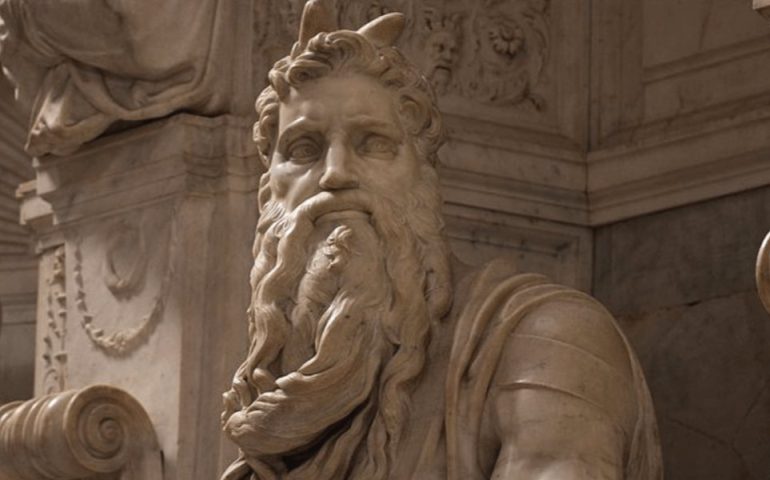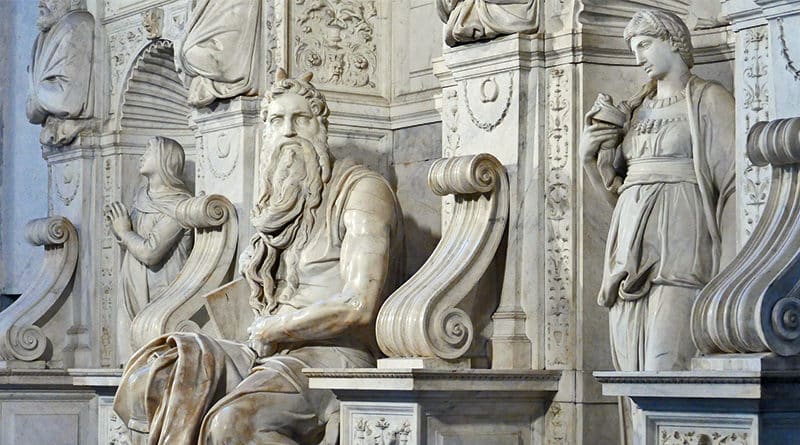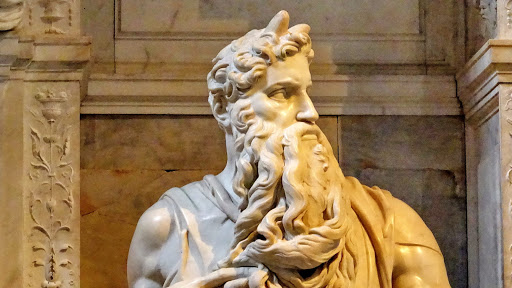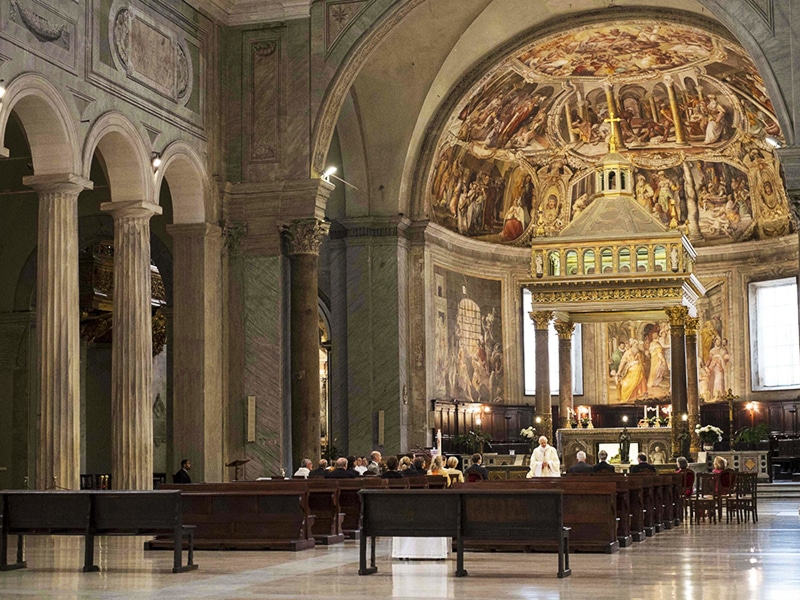The legend of the Statue of Moses
In the Basilica of Saint Peter’s in Chain, in the Monti district, on the Oppio hill, there is a wonderful and very famous statue of Moses, sculpted by Michelangelo. Masterpiece of Renaissance art, the statue (which has strange horns, probably the result of an interpretation error) is also famous for a legend, which has as its protagonist the great Tuscan artist, who contemplating the statue, at the end of the last finished and amazed by the realism of its forms, he exclaimed the phrase “Why don’t you speak?”, hitting the knee with the hammer he was holding. This statue presents a number of very interesting curiosities. Let’s go and discover them.

Commissioned by Pope Julius II in 1505, the Moses was to be part of the grandiose statuary complex on three levels and adorned with about 40 statues, conceived as the Pope’s mausoleum, which was to occupy a central place in the new St. Peter’s Basilica. Then, following the Pope’s death, the project underwent significant changes and downsizing and the last project was only finished in 1545.

The marble sculpture is 235 cm high. The prophet is represented in a seated position, with the bearded head turned to the left, the right foot placed on the ground and the left leg raised with only the tip of the foot resting on the base. His left arm is left on his lap, while the right one holds the tablets of the Law, while his hand curls his long beard. Curiously, the tablets of the law are overturned, as if they had slipped from the arms of Moses.
The statue, in its composition, expresses the solemnity and majesty of the biblical character. The gaze of Moses defined as “terrible” is famous: it was interpreted as an expression of Michelangelo’s character, irascible, proud and severe.
The horns on Moses’ head, typical of his iconography, are probably due to a translation error of the Book of Exodus (34-29), in which it is said that Moses, coming down from Mount Sinai, had two rays on his forehead. The Hebrew “karan” or “karnaim” – “rays” – may have been confused with “keren” – “horns”. The fact that in the Middle Ages it was believed that only Jesus could have a face full of light may also have contributed to the error.

We come to the legend. An anecdote is linked to this sculpture: Michelangelo, contemplating the statue, at the end of the last finishing touches and himself amazed by the realism of its forms, exclaimed the phrase “Why don’t you speak?”, Hitting the knee with the hammer he was holding. The knee of the statue actually has an imperceptible grain.
In reality, both by looking in the historical documents of the period and by studying the knee in question at close range, it has not been possible to prove at the moment the veracity of this legend.
The knee that Michelangelo would have struck, in fact, has only a natural vein of the marble that crosses it.

According to another rumor of popular imagination, in the beard of Moses (which Vasari defined as perfect as to seem more “the work of a brush than a chisel”), under the lower lip, slightly to the right, Michelangelo would have carved the profile of Pope Julius II is a head of a woman, his lover.

Riguardo la statua si dice anche che il gonfaloniere di Firenze, Pier Soderini, si permise di criticare le proporzioni del naso; il furbo Michelangelo fece allora finta di aggiustarlo e ottenne la soddisfazione del politico, che affermò “Ora va benissimo!”.
BOOK YOUR ROME TOUR IN TWO DAYS

